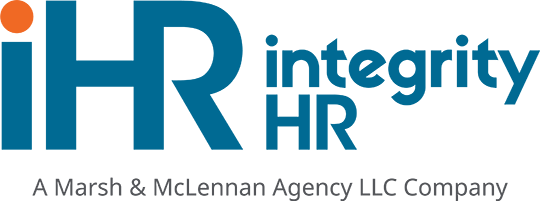 Jose Antonio Vargas lied to his employers for over 10 years. He recently decided to tell the truth in a very public way using New York Magazine as his platform. His secret: Vargas is an undocumented worker.
Jose Antonio Vargas lied to his employers for over 10 years. He recently decided to tell the truth in a very public way using New York Magazine as his platform. His secret: Vargas is an undocumented worker.
In his article “My Life as an Undocumented Immigrant” Vargas details the steps he took to cover up his secret. The condensed version of the story goes like this: Vargas’s mother sent him to California from the Philippines in 1993 when he was just 12 years old. Vargas moved in with his grandfather and grandmother who were naturalized citizens. Vargas found out he was undocumented at age 16 when he tried to get his driver’s permit at the DMV. From then on, he worked diligently to cover up his illegal status, convinced if he worked hard enough and achieved enough, he would be granted citizenship. Unfortunately, that never happened.
With the help of agents, including the superintendent of his school district and principal of his high school, Vargas was able to graduate high school and college, all the while using fake and doctored documents. Vargas went on to work at the Washington Post and even won a Pulitzer in 2007 for his shared coverage of the Virginia Tech shootings.
WHOSE PROBLEM IS IT?
Here’s an interesting twist: After about four months at the Washington Post, Vargas told a member of thePost’s management team about his situation. Peter Perl was the paper’s director of newsroom training and professional development and Vargas felt comfortable telling him because they worked together during his internship the previous summer. What did Perl do? He said he wouldn’t do anything. Perl would wait until Vargas proved he was an asset to the paper and then take the problem to the chairman and executive editor.
From the HR perspective, Perl made a mistake that could create serious ramifications for the paper. What would you have done?
We suggest three ways of handling this situation:
- Perl could say, “Hey, that’s a shame that you are undocumented and you should have been honest with us from the beginning, but you’re a great employee, so let’s make you legit. You are a valuable person on a staff and we want to help.” Perl could have worked with Vargas to help him get the right documentation and a working visa so he could legally work for the Post. Not the easiest solution, and there is a lot of red tape involved for this type of commitment. However, for a good employee who brings the needed skills to the table, it’s a worthwhile investment.
- Perl could say, “That’s too bad, Vargas. But you need to get the documentation before you can continue working here. ” Perl could have left it up to Vargas to get the right paperwork filled out.
- Perl could say, “See you later. You’ve committed fraud, and that’s against our company policy.” Once Perl knew Vargas was undocumented, he made the whole company liable. The Immigration Reform and Control Act of 1986 (IRCA) makes it illegal to knowingly employ undocumented workers. The law requires all employers to fill out the I-9 immigration status form and verify the documents within three days of hiring an employee.
Did Perl eventually talk to his bosses and turn Vargas in? No. Vargas worked at the Post for five years with neither of them ever telling the Post’s chairman or executive editor.
POSSIBLE PENALTIES
What would have happened if the U.S. Immigration and Customs Enforcement (ICE) had found out? For knowingly hiring or employing undocumented workers, the fines range from $250 to $5,500 per violation depending on the prior history of violations. Think your business won’t be caught? The ICE randomly chooses to examine 2,500 businesses each year for IRCA violations. Even if you’re not knowingly hiding an illegal worker at your business, each mistake on an I-9 immigration status form is penalized by fines between $100 and $1000 per violation (each mistake on the same form counts as a separate violation).
In other states, the repercussions are even harsher. Just this past May, the Arizona Supreme Court upheld the Legal Arizona Workers Act of 2007. This law states employers who knowingly hire illegal workers can lose their license to do business. The state law requires employers to check the federal E-Verify system before hiring new workers. Eight other states have passed similar laws including Colorado, Mississippi, Missouri, Pennsylvania, South Carolina, Tennessee, Virginia and West Virginia.
I-9 vs. E-Verify
You might ask what’s the difference between the I-9 form and the E-Verify. I-9 immigration status forms are just looked over by the employer. E-Verify is an Internet-based system that compares information from your I-9 form to data from the U.S. Department of Homeland Security and Social Security Administration to confirm employment eligibility. E-Verify is a free service and provides results in three to five seconds.
One factor in whether or not Vargas applied for a job was if they used E-Verify. Vargas knew his fake documents wouldn’t pass the test, so he would not apply for a job if the company used E-Verify upon employment.
Currently, the U.S. House of Representatives Subcommittee on Immigration Policy and Enforcement is debating proposed legislation (H.R.2164) that would require all U.S. employers use E-Verify and would eliminate the I-9 immigration status form. Proponents of the bill such as the bill co-sponsor and Chairman of the House Judiciary Committee Lamar Smith says E-Verify is an easy and effective way to make sure employees are eligible to work.
PROTECT YOUR BUSINESS
When we think about illegal aliens, people like Vargas are not what come to mind. Even though Vargas was a hard-working and talented employee, the fact is he was undocumented. Once his employer knew this information, he was putting the whole company at risk. No matter what side of the immigration legislation debate you fall on, your company must still follow the rules or risk detrimental fines.
If you need one of our professionals to perform an audit to make sure your company does not have any I-9 form errors, do not hesitate to contact us. We know the form can be confusing and we are here to help.











